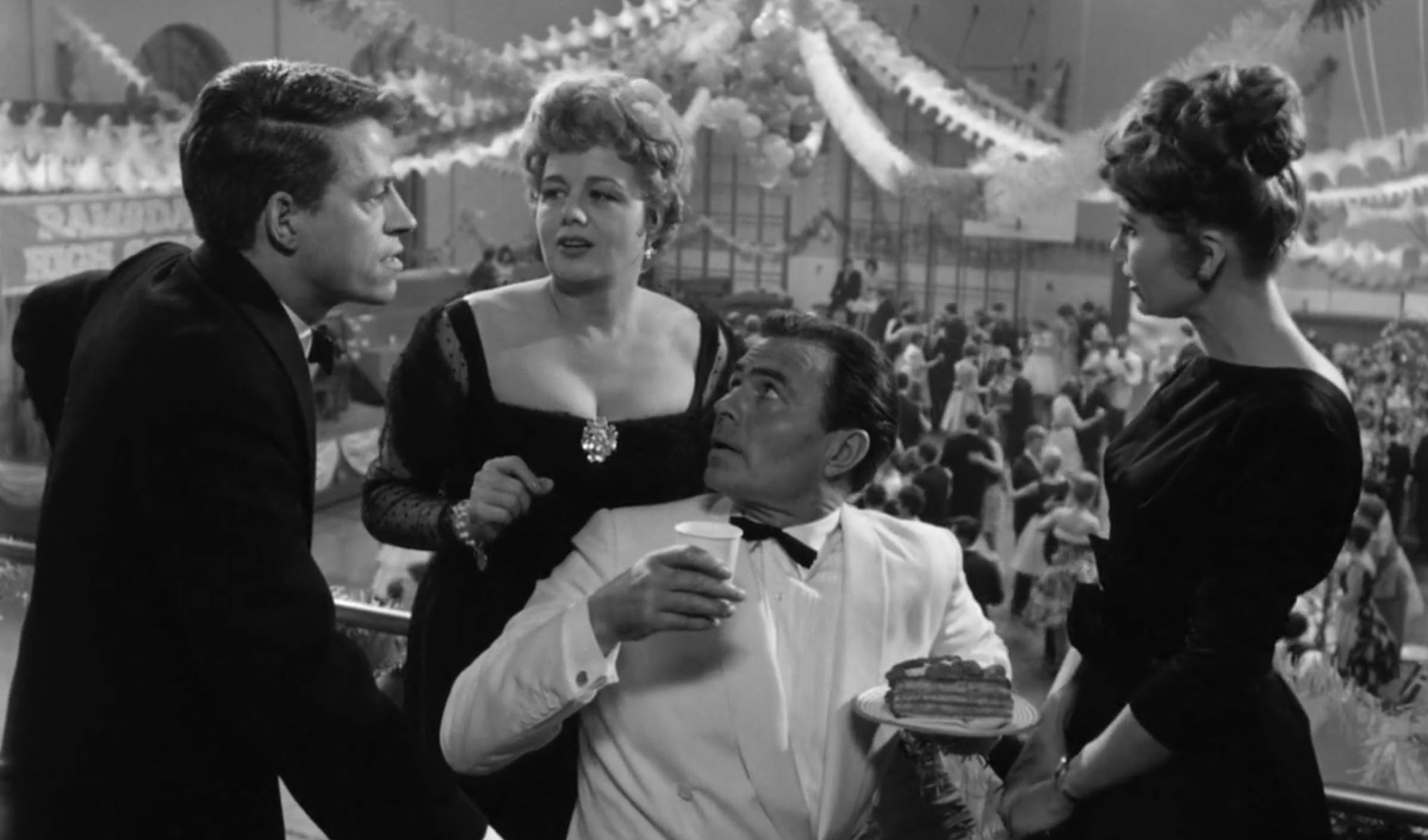Lolita (1962)
With the Alabamian public on the verge of electing a man banned from the mall for picking up teenage girls, it seems only fitting that we review this film about that illegal love that dare not speak its name...
I’m sorry, that was in incredibly poor taste. But that’s the basic issue with Lolita. It’s a comedy based on a ghastly premise. A black comedy, mind you, but it’s still discomfiting to find yourself alternating between laughing and squirming throughout the film’s two and a half hour runtime. As much more able comedians than I, Peter Sellers and Stanley Kubrick actually somehow make this comedy work.
At least until you remember that Lolita is 12. (And the actress who played her, Sue Lyons, was 14 during the filming.)
James Mason: Black dress shirt and paisley ascot.
Kubrick begins Lolita at the ending with Humbert Humbert (James Mason) confronting Sellers’ obnoxious playwright, Clare Quilty. This is a sign of the influence of the French New Wave that had just recently reached American audiences, but it also accomplishes something important: It creates stakes with only barely mentioning the underage teen at the center of this love triangle. Lolita would be hard to sit through if the first scene was Humbert ogling a bikini-wearing preteen with that “Ya Ya” theme playing.
Mason’s Humbert is the sort of absent-minded dullard incapable of hiding his affection for his landlord’s—and later wife’s—daughter. Writing his obsession for Lolita in his diary is the closest Humbert comes to discretion. It’s just the blog’s luck that Mason spends most of the film dressed like a well-to-do member of proper society.
Mason: Double-breasted white dinner jacket, white dress shirt and narrow black bow tie. Rando on the left: Black tuxedo, white dress shirt and black bow tie.
He’s the kind of person who wears an ascot while being seductively fed an over-easy egg by a minor. The kind of person who wears a double-breasted white dinner jacket while ignoring the advances of a game widow so that he may instead ask what her daughter is up to. The kind of person who wears a brass-buttoned navy blazer while suspiciously questioning a camp counselor about what his 12-year-old stepdaughter has been doing at summer camp.
Beyond his wardrobe, James Mason adds this odd air of likability to this otherwise monstrous character. Humbert comes off as more as the proper, perpetually flustered and exasperated comic relief than pederast. But, oddly enough, if you made the Lolita character of consent age, Humbert would come off as a paranoid, controlling and abusive boyfriend.
Sellers: Heather gray three-piece suit, white dress shirt and cool tie.
Lolita, as a whole, only works with the cringe-worthy focus of the story. The criminal nature of the affair makes it a farce. The farce makes it funny. The humor is the only reason you continue watching while feeling disgusted with yourself. And that’s assuming it works. I’m not sure it does. Lolita exists as an oddity for me. I’m not sure how it got made in 1962. Kubrick is on the record as saying he never would have made the film if he’d known what he’d have to deal with. It’s the closest anyone’s come to pulling off a comedy about pedophilia.
And, hey, if you follow those links to the store, you too can look like a flustered professor worried that anyone might get in the way between he and his Lolita.
Mason: Tan topcoat with fur trim, white dress shirt and light-colored tie.




